ALFA ROMEO
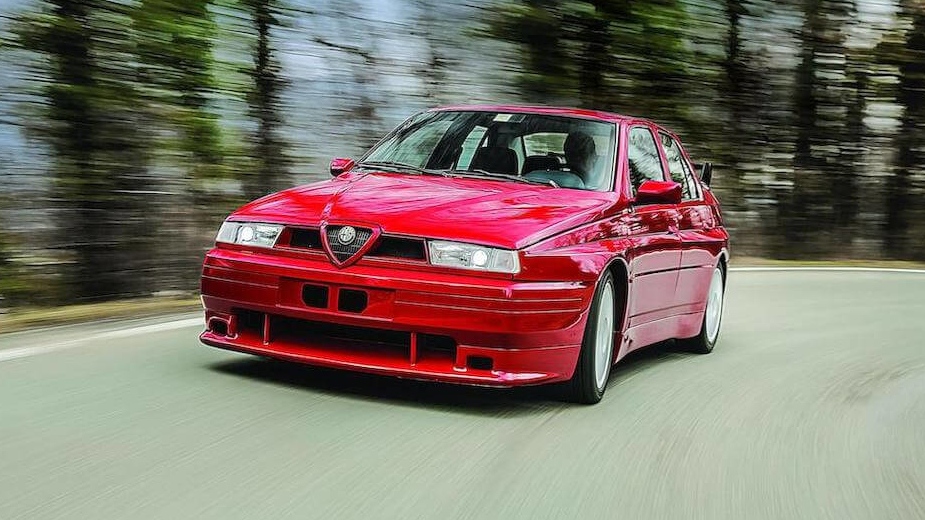
Alpha 155: 30 years later
Fiat was not in an easy position after buying Alfa Romeo in 1986, as the key to the brand's survival was the use of a common floor. The Italians already had experience in this, the 1987 164 was built on a common basis with Fiat Croma and Lancia Thema, but development was started by Alfa Romeo, and Saab was also part of the project with the 9000. The end result was a novelty. attractive and exciting. It didn't matter that he drove his first wheels either, as Italians didn't have much upper-middle class laurels before, and after the '90s they were clearly considered a step forward by customers.
Not so with the 155 sharing the Fiat Tempra and Lancia Dedra, which in the eyes of fans cannot be attributed to its predecessor, the rear-wheel drive and 75 transaxle. Despite the differences between the two builds, the skepticism of the target audience was the main reason for the disillusioned reception of the 155, which was rejected by the specialized press, although the company felt the weight of the task and tried to present an attractive sports limousine in January 1992. The exterior is marked by Ercole Spada, who composed the colors of the Instituto I.DE.A, and the interior by Walter de Silva. Of the studio's Italian cars, the 155 is the most passionate, the most sporty! The wedge shape, which rhymes with Pininfarina's 164, was not only characteristic, low air resistance and useful, its 0.29 form factor was favorable and its 525-liter trunk was spacious. Although the quality of the material has also been criticized, it has favored brand-friendly details such as the embossed badge on the pedals, the center console slightly turned towards the driver, or one of the most important, the ideal driving position.
Engine...Of course, for the engine, of which the 155 offered four types when it came out. The base engine was a 1.8-litre, 129 horsepower, twin-spark gasoline engine (Twin Spark), so the 1230kg limousine accelerated from 0-100km/h in 10.3 seconds and reached a top speed of 200km/h. H! The 144-horsepower 2.0-liter was 1 second more agile, but the extra 23Nm of torque was an advantage every day. Equipped with the well-known Busso V6, the design was 2.5 liters, delivering 165 horsepower at 5,800 rpm with an injector and 216 Nm of torque at 4,500, not to mention the heartfelt sound. Although the car's weight has increased to 1,330 kg, its acceleration from 0 to 100 km/h has been reduced to 8.4 seconds.
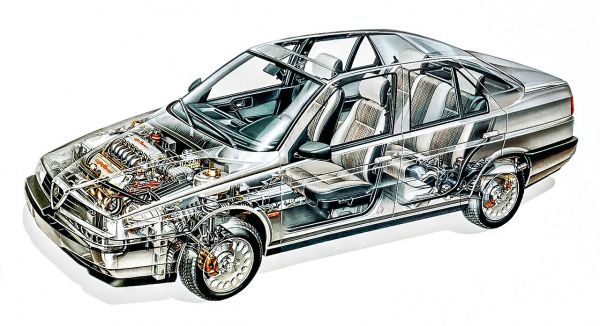
The ''B'' side...At the top of the range was the powertrain-powered Lancia Delta Integrale, which drove the 155 with a 195 horsepower 2.0-liter turbo engine and 3 differential locks. Due to the extra elements of the powertrain, its weight was reduced to 1445 kg, its luggage space was reduced to 410 liters, in exchange it ran from 0 to 100 km/h in 7.5 seconds and was capable of running on the highway. German at 225 km/h, although the top model was looser it was on the ground in its element. The V6 and Q4 even offered an extra electronically adjustable damper at an additional cost. Fiat will certainly include a 2.0-liter, 90-horsepower turbo diesel and a 2.5-liter, 125-horsepower turbo diesel from 1993, but together they only accounted for 14% of sales.
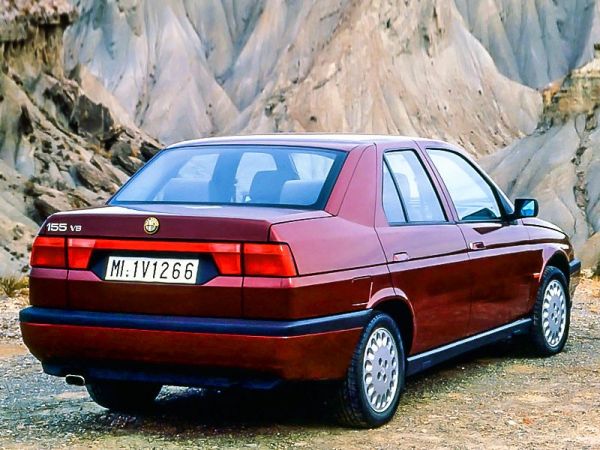
In addition to the growing popularity of diesel in Europe, the parent company's achievements in Alfa Romeo's motorsport have not been forgotten; Thanks to the race track's success, the street car also attracted the interest of fans, who in addition to the Formula sports model, also tried to boost sales with limited series that differed from market to market. The model update, introduced in December 1994, further improved its rating of 155. The front-rear strip and fenders were also widened, its steering tuned more directly, with a chrome shield on the outside and a colored bumper at the base price, better quality materials in the interior and a redesigned instrument panel. Starting in 1996, the range was renewed with new 16-valve, 1.6 and 1.8-litre engines, and in 1998, despite all efforts, a total of 195,526 units left the brand's factory in Pomigliano d'Arco. . In comparison, 2,745,773 BMW 3 Series E36s were produced running in parallel, and more than twice as many owners of its sister model, the Fiat Tempra and Lancia Dedra, were found on the market.
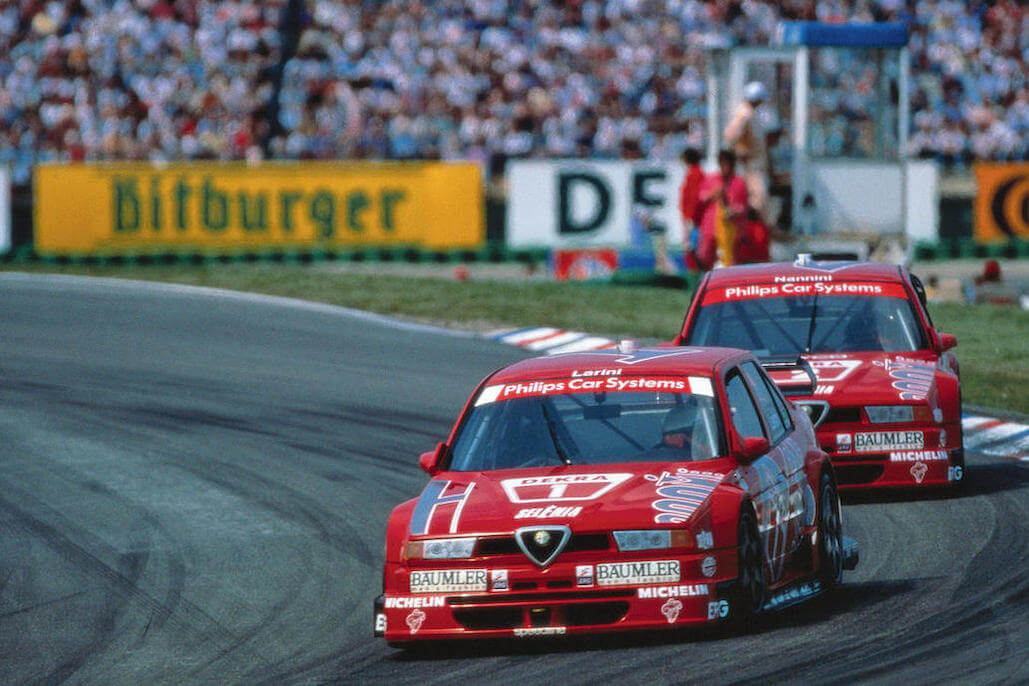
The Track devil... Deutsche Tourenwagen Meisterschaft (DTM), which started in 1984, not only showcased German products in its first season, but for the first 9 years only national models won the championship. This series was spectacularly interrupted by Alfa Romeo in 1993, when the Alfa Corse team decided to prove themselves in the DTM after winning the 155 GTA Superturismo in Italy. In the new season, two categories were launched, in addition to the Class 2 GTA, a prototype racing car developed in the Class 1, the V6 Ti based on a carbon fiber chassis. Nicola Larini and Alessandro Nannini were put behind the wheel of a 2.5-liter, 420-horsepower, aluminum-clad V6 with titanium valve, a miracle weapon equipped with all-wheel drive. Already in the first wet race, the superiority of the 155s became apparent, and they finally won the 1993 season on an individual and constructive level...At the top of the range was the powertrain-powered Lancia Delta Integrale, which drove the 155 with a 195 horsepower 2.0-liter turbo engine and 3 differential locks. . Due to the extra elements of the powertrain, its weight was reduced to 1445 kg, its luggage space was reduced to 410 liters, in exchange it ran from 0 to 100 km/h in 7.5 seconds and was capable of running on the highway. German at 225 km/h, although the top model was looser it was on the ground in its element. The V6 and Q4 even offered an extra electronically adjustable damper at an additional cost. Fiat will certainly include a 2.0-liter, 90-horsepower turbo diesel and a 2.5-liter, 125-horsepower turbo diesel from 1993, but together they only accounted for 14% of sales.
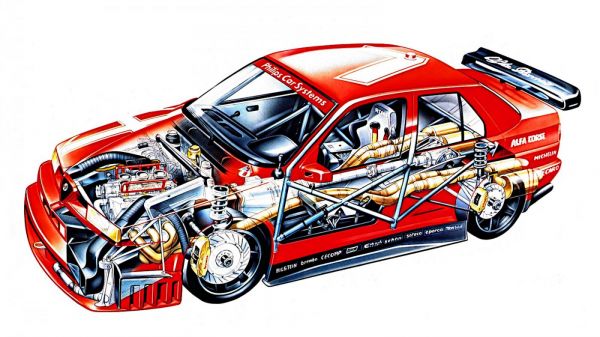
In addition to the growing popularity of diesel in Europe, the parent company's achievements in Alfa Romeo's motorsport have not been forgotten; Thanks to the race track's success, the street car also attracted the interest of fans, who in addition to the Formula sports model, also tried to boost sales with limited series that differed from market to market. The model update, introduced in December 1994, further improved its rating of 155. The front-rear strip and fenders were also widened, its steering tuned more directly, with a chrome shield on the outside and a colored bumper at the base price, better quality materials in the interior and a redesigned instrument panel. Starting in 1996, the range was renewed with new 16-valve, 1.6 and 1.8-litre engines, and in 1998, despite all efforts, a total of 195,526 units left the brand's factory in Pomigliano d'Arco. In comparison, 2,745,773 BMW 3 Series E36s were produced running in parallel, and more than twice as many owners of its sister model, the Fiat Tempra and Lancia Dedra, were found on the market.
Mundoquatrorodas






Nenhum comentário:
Postar um comentário